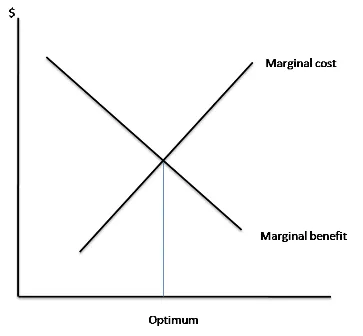Benefits
Net Benefit
Economists treat opportunity cost as the full value of the best alternative you forgo. Subtracting it from the total benefit of an action tells you whether the action is worth doing at all. The Net Benefit = Total Benefit – Opportunity Cost.
Marginal Benefit
The marginal benefit (MB) is the extra benefit gained from one additional unit of an activity (the next coffee, the next widget, the next minute on TikTok). For consumers it often shows up as the maximum they are willing to pay for that one more unit, and it typically falls with each extra unit because of diminishing marginal utility.
Marginal Cost
The marginal cost (MC) is the extra cost incurred from producing or consuming one more unit. It includes variable inputs (labour, materials, the lost sleep from one more episode) but excludes sunk costs. It rises as capacity becomes strained.
The Marginal Decision Rule

If the marginal benefit of an additional unit exceeds the marginal cost, the activity should be increased. if the marginal cost is greater, then activity should be decreased. As a result, the optimal net benefit is when MC = MB.
Example
| Units of activity (Q) | Marginal Benefit (MB) | Marginal Cost (MC) | Marginal Net Benefit (MB – MC) | Cumulative Net Benefit |
|---|---|---|---|---|
| 1 | 10 | 4 | +6 | 6 |
| 2 | 8 | 4 | +4 | 10 |
| 3 | 6 | 5 | +1 | 11 |
| 4 | 4 | 6 | –2 | 9 |
| 5 | 2 | 7 | –5 | 4 |
At Q = 4 the marginal cost first exceeds the marginal benefit (4). The negative marginal net (–2) shrinks the total, dropping cumulative net benefit to 9. Everything beyond that only reduces the total further, thus the net benefit is maximised at 3 units.